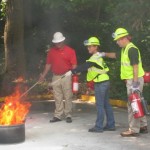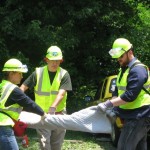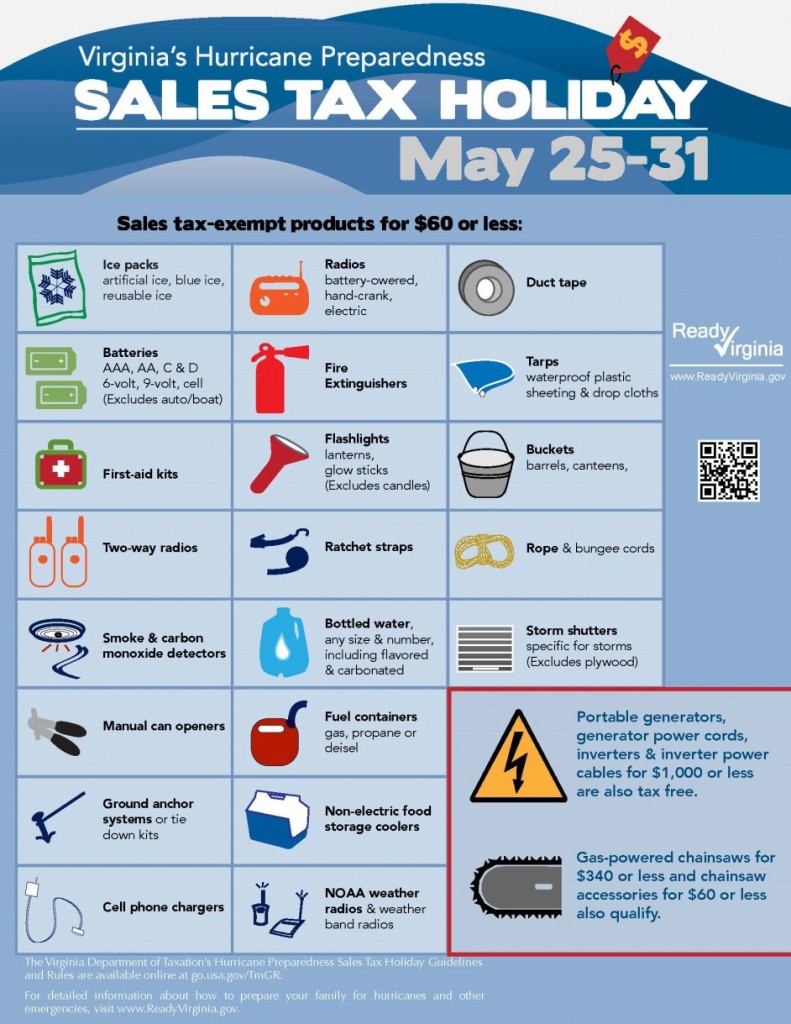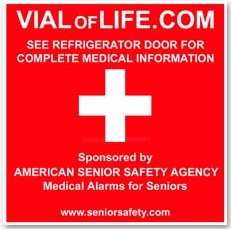The Office of Emergency Management and Safety would like to congratulate Dr. Stewart Edwards (Assistant Dean of Business Management at the Annandale Campus) for recently earning his Campus Community Emergency Response Team (C-CERT) Train-the-Trainer Certification from FEMA. This certification enables Dr. Edwards to help train future NOVA C-CERT members and help them become better prepared for various emergencies at home, on campus, or in their neighborhoods.
 Q: How long have you been a C-CERT member at NOVA?
Q: How long have you been a C-CERT member at NOVA?
A: 3 years
Q: Why did you enroll in C-CERT?
A: To be honest, I did this for myself. I wanted to learn more about emergency preparedness, and actions I could take to prepare myself, my family at home, and on campus. Being resilient during emergencies is important and I wanted to learn what to do prior to an emergency happening—before it’s too late.
Q: Why did you decide to register for C-CERT Train-the-Trainer?
A: After going through NOVA’s C-CERT training program, participating in C-CERT exercises, and attending CERT conferences, I see great potential for strengthening this program at NOVA. I am very grateful to NOVA’s OEMS for approving my attendance at the 3-day Emergency Management Institute training. I can provide value to the program if I can help train future C-CERT members and teach people why emergency preparedness is so important. I want to help grow NOVA’s C-CERT program because I strongly believe in its mission not only for our personal preparedness, but also on campus and in our neighborhoods.
Q: Why would you recommend faculty and staff members take C-CERT?
A: If nothing else, take C-CERT training for yourself and personal knowledge. The College believes in this program and is willing to let you take this on “company time” free of charge. Given the nature of where we work, each campus is like a small town with all the potential for various emergencies. The more of us trained, the better prepared we are as a team to serve NOVA and our communities in time of need.
Future C-CERT classes are being planned this year, so stay tuned for a future email announcement. If you have questions about the program or how you can get involved, please email OEM@nvcc.edu.
About C-CERT: The Campus Community Emergency Response Team (C-CERT) Program educates people about disaster preparedness for hazards that may impact their campus and community, and trains them in basic disaster response skills, such as fire safety, light search and rescue, team organization, and disaster medical operations. Using the training learned in the classroom and during exercises, C-CERT members can assist others in their campus, family, and/or neighborhood following an event when professional responders are not immediately available to help.
 THE GOAL: Have the ability to communicate with family members during a disaster.
THE GOAL: Have the ability to communicate with family members during a disaster.


 Q: How long have you been a C-CERT member at NOVA?
Q: How long have you been a C-CERT member at NOVA?

 One way you can prepare senior citizens (or anyone else with a complex medical history) at home is through the Vial of Life Project.
One way you can prepare senior citizens (or anyone else with a complex medical history) at home is through the Vial of Life Project.